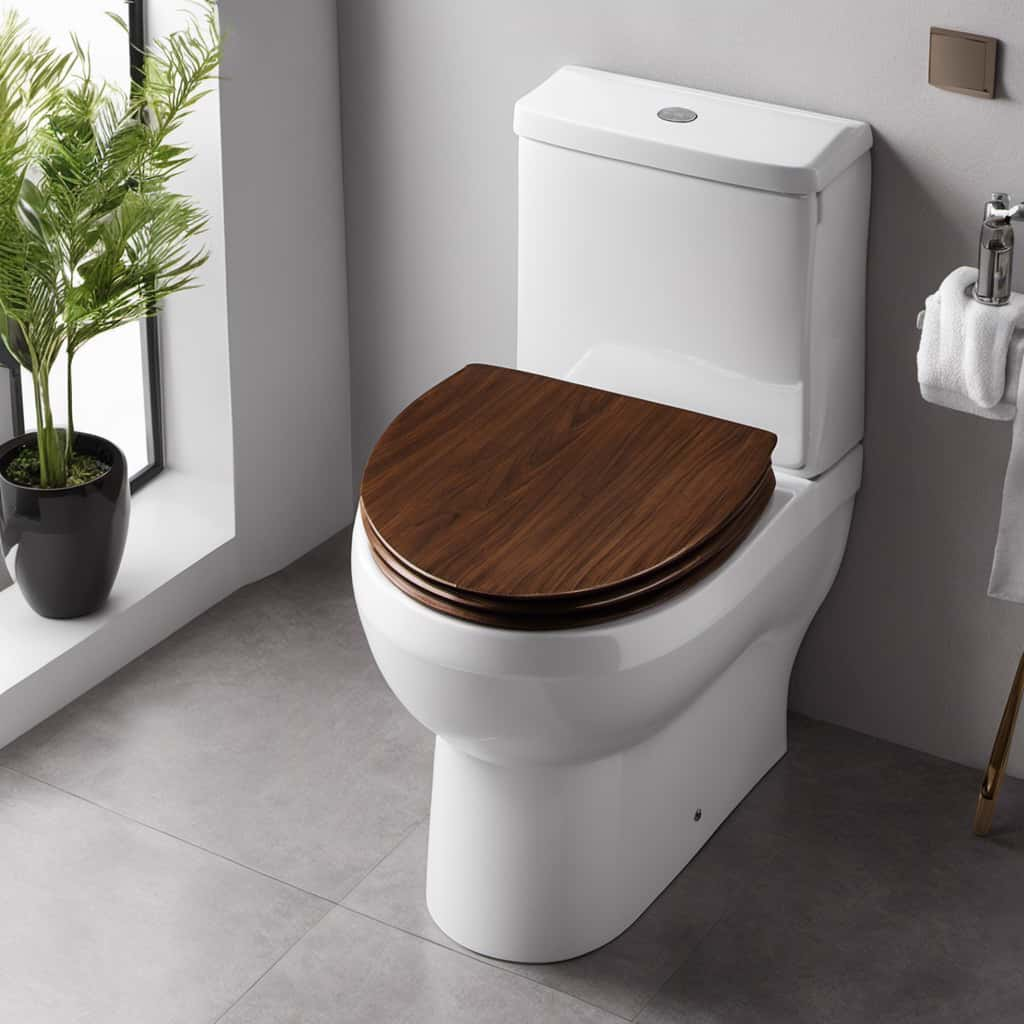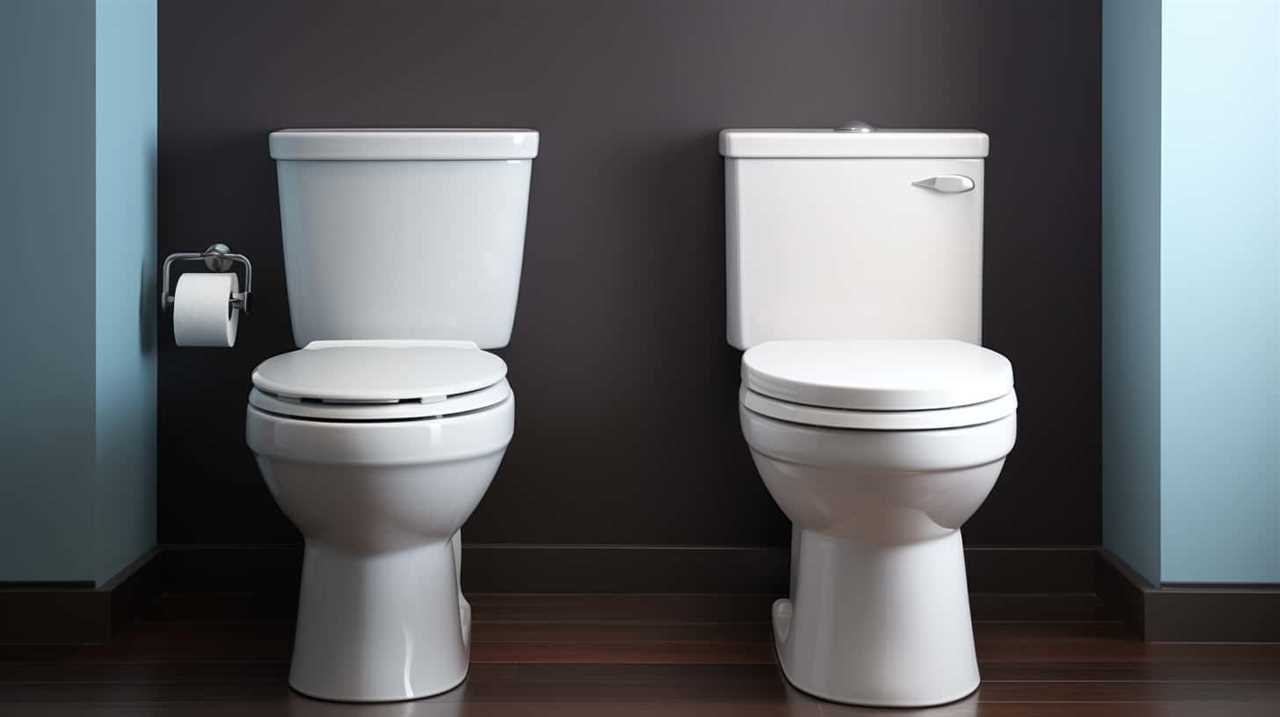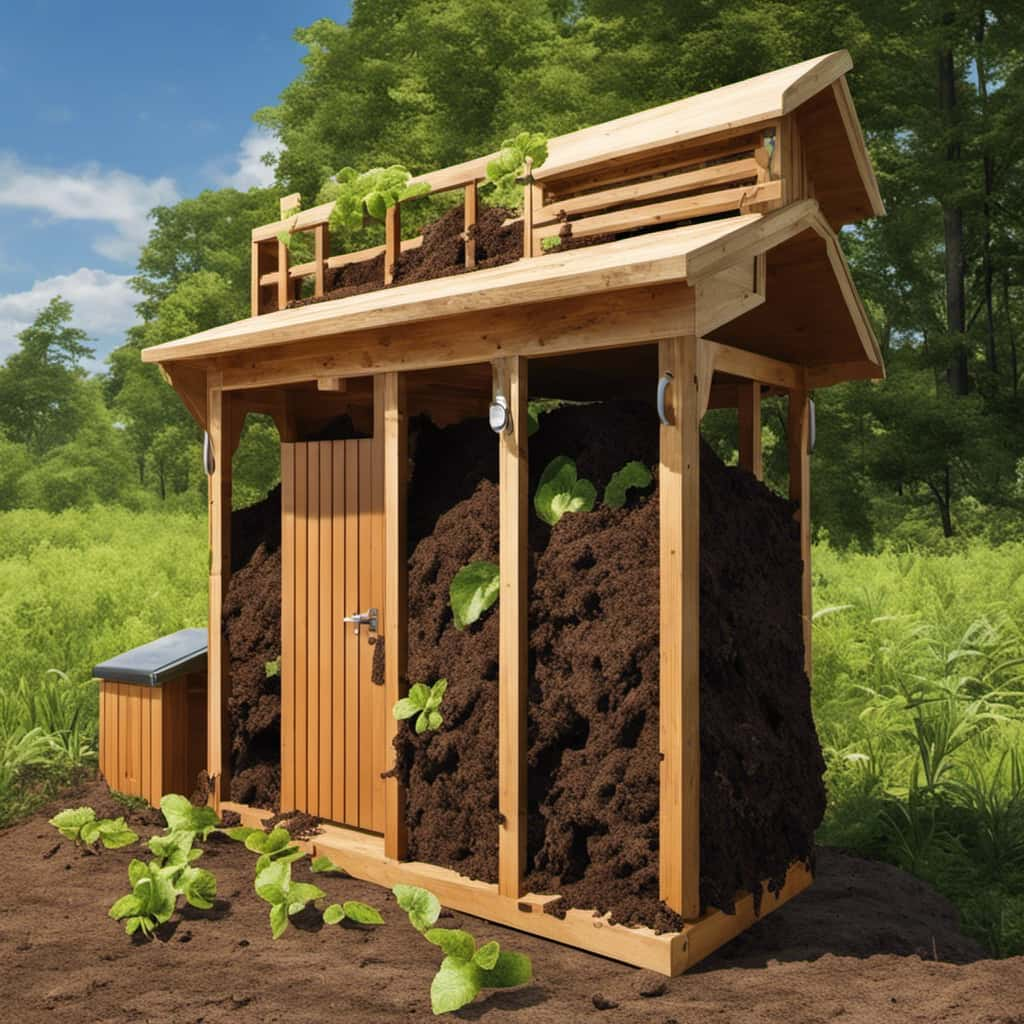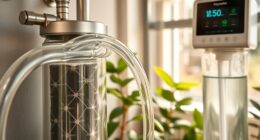Welcome to the fascinating world of wastewater management, where we embark on a journey to uncover the secrets of what happens to the stuff we flush down the toilet.
Join us as we delve into the intricate underground network of sewers, navigate through the maze-like tunnels, and witness the magic that takes place at the wastewater treatment plant.
Get ready to explore the meticulous process of cleaning and purifying the wastewater, and discover the final destination of this treated liquid.
It’s time to master the art of understanding where it all goes.

Key Takeaways
- The journey of wastewater from toilets to the sewer involves a complex infrastructure of pipes, pumps, and treatment facilities.
- The wastewater treatment process includes primary and secondary treatment, as well as chemical treatment, to remove contaminants and purify the water.
- Treated wastewater is safely discharged back into the environment after rigorous testing to ensure compliance with environmental regulations.
- Treated wastewater can be reused for irrigation and industrial purposes, helping to conserve freshwater resources and reduce strain on water supplies.
The Journey Begins: From Your Toilet to the Sewer
When we flush the toilet, our waste begins its journey from our homes to the sewer. This process is made possible by the sewer infrastructure, a network of pipes, pumps, and treatment facilities that transport and treat our wastewater.
The sewer infrastructure plays a crucial role in maintaining public health and protecting the environment. As our waste travels through the sewer system, it undergoes a series of treatments to remove contaminants and harmful substances. These treatments, which include physical, chemical, and biological processes, help minimize the environmental impacts of our waste.
Inside the Sewer: Navigating the Underground Network
As we journey inside the sewer, we navigate through the intricate underground network. This underground infrastructure is a complex system of pipes, tunnels, and chambers that transport wastewater from our homes and businesses to the wastewater treatment plant. Here are three key components of this underground network:
- Main Sewer Lines: These large diameter pipes serve as the main arteries of the sewer system, carrying the bulk of the wastewater flow. They’re designed to handle high volumes and are made of durable materials to withstand the test of time.
- Pumping Stations: To overcome elevation differences and ensure the steady flow of wastewater, pumping stations are strategically located throughout the network. These stations use powerful pumps to lift the wastewater to higher elevations, maintaining consistent flow rates.
- Maintenance and Repairs: Regular maintenance and repairs are crucial to keep the underground infrastructure in optimal condition. Inspection crews use specialized equipment to identify any issues, such as blockages or leaks, and promptly address them to prevent disruptions in the system’s functionality.
As we navigate through the intricate underground network, we gain a deeper understanding of the importance of maintenance and repairs in ensuring the smooth operation of the sewer system.

Now, let’s explore the next stop on our journey: the wastewater treatment plant, where the magic happens.
Arrival at the Wastewater Treatment Plant: Where the Magic Happens
Upon arrival at the wastewater treatment plant, we witness the transformation of the flushed waste into clean water. The process of wastewater purification involves several stages, with chemical treatment being a crucial step.
Once the wastewater reaches the treatment plant, it undergoes primary treatment, which involves the removal of large solids through mechanical processes such as screening and sedimentation.
After primary treatment, the wastewater enters the secondary treatment phase, where the remaining organic matter is broken down by microorganisms in a process called biological treatment.

However, to ensure complete removal of contaminants, chemical treatment is often employed. Chemicals such as chlorine or ozone are added to the water to disinfect and remove any remaining pathogens. Additionally, coagulants and flocculants are used to aid in the removal of suspended particles.
Through these chemical treatments, the wastewater is transformed into clean water that can be safely discharged back into the environment.
The Treatment Process: Cleaning and Purifying the Wastewater
First, we begin the treatment process by thoroughly cleaning and purifying the wastewater. This is achieved through a series of steps designed to remove impurities and contaminants, ensuring that the water is safe for reuse or discharge.
The treatment process includes:

- Water Filtration: The wastewater is passed through various filtration systems to remove solid particles, such as debris, sludge, and other suspended solids. This helps to clarify the water and eliminate any physical impurities.
- Chemical Disinfection: After filtration, the water undergoes chemical disinfection to kill harmful bacteria, viruses, and other microorganisms. Chlorine, ozone, or ultraviolet light are commonly used for this purpose. These disinfectants effectively neutralize pathogens, making the water safe for public health and the environment.
- Additional Treatment Processes: Depending on the specific requirements of the wastewater treatment plant, additional processes may be employed to further purify the water. These can include advanced oxidation, activated carbon adsorption, or membrane filtration, among others. These processes target specific contaminants and ensure that the water meets the necessary quality standards.
The Final Destination: What Happens to the Treated Wastewater
Once the wastewater has been thoroughly cleaned and purified, we must now explore the final destination of the treated wastewater. One important aspect to consider is the environmental impact of releasing the treated wastewater into ecosystems. Studies are conducted to analyze the effects of treated wastewater on the environment, particularly on aquatic life and surrounding ecosystems. These studies help us understand the potential risks and develop strategies to mitigate any negative effects.
Another aspect to consider is the potential for reusing the treated wastewater as a valuable resource. Treated wastewater can be used for irrigation purposes, providing a sustainable water source for agricultural activities. Additionally, industries can benefit from using treated wastewater for various processes, such as cooling systems or manufacturing operations. By reusing treated wastewater, we can conserve freshwater resources and reduce the strain on existing water supplies.
Frequently Asked Questions
How Long Does It Take for the Wastewater to Travel From My Toilet to the Sewer?
It takes varying amounts of time for wastewater to travel from our toilets to the sewer system. Factors like the distance to the sewer, pipe conditions, and flow rate can affect the travel time.
Are There Any Health Risks Associated With the Wastewater Treatment Process?
In the wastewater treatment process, there could be potential health risks and environmental impact. It is crucial to analyze the treatment methods thoroughly to ensure the safety of both humans and ecosystems.

Can the Wastewater Treatment Plant Reuse the Treated Water?
Yes, the wastewater treatment plant can reuse the treated water. Water reclamation is a process that allows the treated water to be used for various purposes, such as irrigation.
What Happens to the Solid Waste That Is Removed During the Treatment Process?
When discussing waste disposal and sewage management, it is important to understand what happens to the solid waste removed during the treatment process. This information is crucial for effective and efficient sewage management systems.
How Does the Wastewater Treatment Plant Handle Chemicals and Pharmaceuticals That May Be Present in the Wastewater?
When it comes to handling chemicals and pharmaceuticals in wastewater, our treatment plant employs advanced techniques for chemical removal and pharmaceutical disposal. We prioritize the safety and efficiency of the process.
Conclusion
So there you have it, folks! After embarking on a wild journey from your beloved toilet, your waste finally reaches its grand destination: the wastewater treatment plant.

Through a meticulous process of cleaning and purifying, this once filthy water is transformed into something that can be safely released back into the environment.
It’s truly miraculous how our waste can go from foul to fabulous, all thanks to the wonders of modern technology.
Just remember, the next time you flush, your waste is on a grand adventure of its own!










